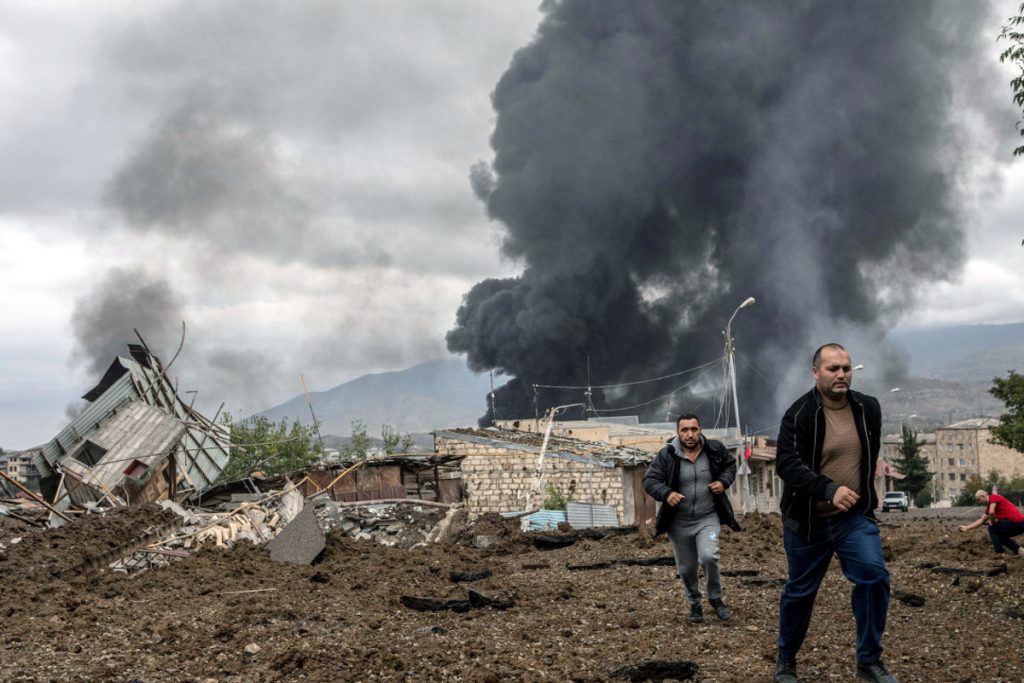Recent developments show that the Nagorno-Karabakh conflict is far from over.
On March 24, 2021, Azerbaijani military went across the line of contact of the disputed Nagorno-Karabakh territory and captured the village of Parukh. Subsequently, the Azerbaijani forces compelled women and children from a nearby village in Khramort to evacuate for security purposes.
The Armenian foreign ministry sharply criticized what it deemed as an Azerbaijani “invasion.” Armenian authorities urged Russian peacekeeping forces to step in and force Azerbaijani troops to withdraw to the positions they previously held.
The Azerbaijani incursion came at a time when tensions between Azerbaijan and Armenia came to a fever pitch after authorities in Nagorno-Karabakh blamed Azerbaijan for cutting off natural gas supplies to the region. Azerbaijan claimed that it was carrying out repairs, which resulted in this reduction of natural gas supplies.
Political intrigue has also marked Armenian politics. On January 23, 2022, Armenia’s president Armen Sarkissian resigned amid speculation that Armenian Prime Minister Nikol Pashinyan was set to make politically unpopular compromises with Azerbaijan on where new borders would be demarcated and normalization of diplomatic relations with Turkey.
This is the latest chapter of the Nagorno-Karabakh conflict that started in 1988 and reignited in 2020. The conflagration that kicked off in late September 2020 resulted in an Azeri victory after a ceasefire agreement was signed on November 10, 2020. Once the dust settled from this conflict, Azerbaijan gained control of seven districts bordering Nagorno-Karabakh that Armenian forces were previously in control of.
Furthermore, Azerbaijan controls a significant portion of Nagorno-Karabakh itself. A Russian peacekeeping force has been patrolling the rest of the disputed territory which is ostensibly governed by local authorities.
According to reports from the Armenian government, 4,000 Armenian soldiers were killed in the Nagorno-Karabakh conflict. On their end, the Azeris lost slightly over 2,900 men in this conflict.
Against the backdrop of the Russo-Ukrainian war, Azerbaijan is looking to exploit Russia’s primary focus on its military operation in Ukraine to make gains in Nagorno-Karabakh. With Russia occupied with Ukraine, it’s unlikely that Russian peacekeeping forces will be able to deter similar outbreaks of violence in the near future.
Azerbaijan, a country with 70% of its population being Shiite Muslims, has been under the leadership of President Ilham Aliyev since 2003, is strongly aligned with Turkey on defense matters and is viewed as a proxy for Turkish influence in the Caucasus region.
Furthermore, Azerbaijan has intimate security ties with Israel, as evidenced by its reliance on Israeli-made “kamikaze drones” and shared strategic fears of Iranian expanding its influence. Its neighbor in Iran has a sizable Azeri population of roughly 15 to 20 million, which has raised speculation about this segment of Iran’s population potentially acting as a fifth column against its Islamic revolutionary government.
Everyone’s focus is on Russia’s military operations in Ukraine at the moment, with a shift in focus to the Indo-Pacific to come in the near future. However, the Caucasus should not be ignored due to the influential actors involved in this region and the high potential for these players to be involved in a hot conflict.
